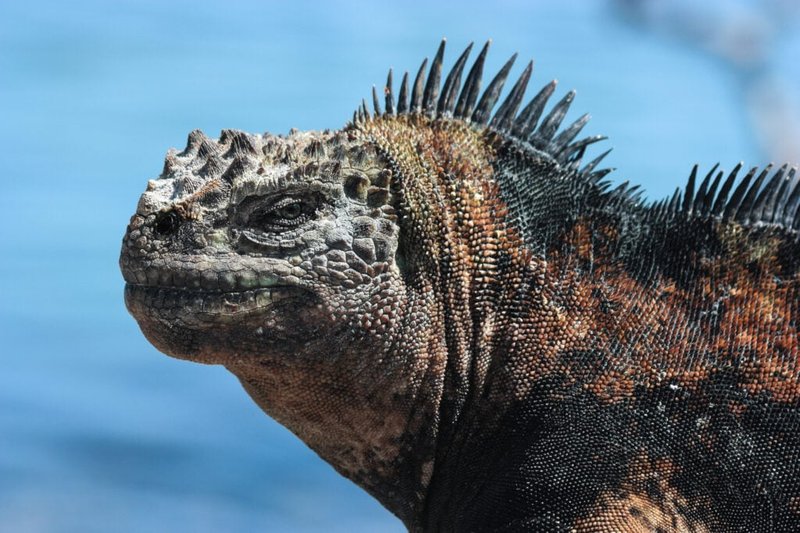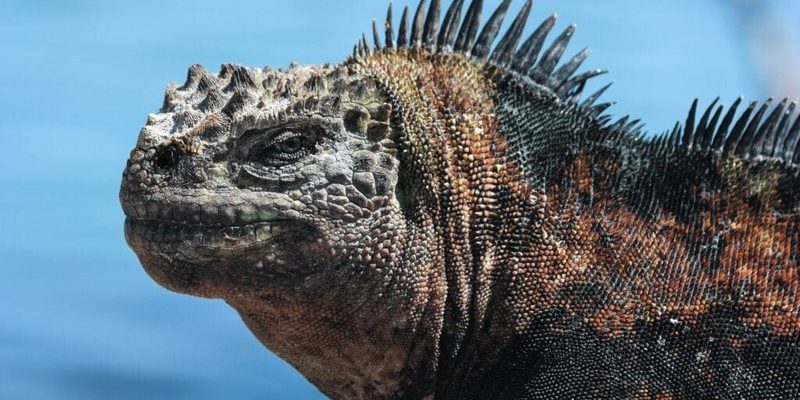
When we think about endangered species, we often picture majestic animals like elephants or tigers. But every creature plays a role in its ecosystem, and that includes the wonderful marine iguana. These reptiles are not just fascinating; they’re also indicators of the health of their environment. If they start to decline, it could signal bigger problems for marine ecosystems. Today, we’ll take a closer look at their status, the threats they face, and what’s being done to protect them.
What Makes Marine Iguanas Unique?
Marine iguanas are like the cool, quirky cousins of the iguana family. They can be found only on the Galapagos Islands, and they have some wild adaptations that set them apart from your typical lizard. For starters, they are the only lizards that can swim! Their flattened tails and webbed feet help them paddle through the water, diving down to snack on algae—yummy, right?
Additionally, they have a unique way of regulating their body temperature. When they come out of the water, they need to bask in the sun to warm up, but sometimes they overheat. Here’s the thing: they have special glands that help them expel excess salt from their bodies after swimming. This adaptation is crucial for their survival, given that they live in a salty environment.
Overall, their unique features make them not only fascinating to watch but also essential to the ecosystem of the Galapagos Islands. They represent the delicate balance of marine life and biodiversity. But let’s talk about why they might need our help.
Are Marine Iguanas Endangered?
So, are marine iguanas endangered? The short answer is yes. According to the International Union for Conservation of Nature (IUCN), marine iguanas are classified as “vulnerable.” This means they are at risk of becoming endangered in the near future if things don’t change. Their population numbers decline due to various factors that threaten their survival.
One of the main threats they face is climate change. Rising sea levels and ocean temperatures affect their food supply and habitats. When the water gets too warm, the algae that they eat can die off. Also, increased frequency of El Niño events, which lead to a rise in ocean temperatures, disrupt their feeding patterns, causing stress on the population.
Aside from climate change, these iguanas also suffer from habitat destruction. Human activities like tourism and the introduction of non-native species (think cats or rats) can harm their natural environments. These predators pose a significant risk to the eggs and young iguanas, further jeopardizing their populations.
What Are the Conservation Efforts for Marine Iguanas?
Conservationists take the threats to marine iguanas seriously, and there are various efforts underway to protect them. Local organizations and governments work hand in hand to develop programs focused on habitat restoration and species conservation. Here’s a quick overview of some key initiatives:
- Protection of Habitats: Efforts to restore and protect natural habitats are crucial. This includes managing tourism to prevent habitat degradation.
- Invasive Species Control: Programs are in place to manage and reduce the impacts of invasive species on marine iguana nests and populations.
- Research and Monitoring: Ongoing research helps scientists understand the health of marine iguana populations and the challenges they face.
- Community Education: Engaging local communities about the importance of marine iguanas helps foster a culture of conservation and respect for wildlife.
These efforts are essential for improving the chances of survival for marine iguanas. It’s a team effort that requires collaboration from government bodies, scientists, and local communities.
How Can You Help Marine Iguanas?
You might be wondering how you can make a difference in protecting marine iguanas, especially if you don’t live in the Galapagos. Well, every little bit helps! Here are some ways to get involved:
- Support Conservation Organizations: Donating to or volunteering with organizations that focus on wildlife conservation can make a significant impact.
- Spread Awareness: Talk about marine iguanas and the issues they face. Knowledge is powerful, and raising awareness can lead to positive change.
- Responsible Tourism: If you visit the Galapagos Islands, practice responsible tourism. Follow guidelines for wildlife viewing, stay on designated paths, and support eco-friendly businesses.
- Advocate for Climate Action: Engaging in discussions about climate change and supporting initiatives aimed at reducing carbon footprints can help all wildlife affected by changing climates.
Even simple actions can contribute to a bigger movement to save our planet’s unique species. Remember, when we protect marine iguanas, we’re also protecting the entire ecosystem they inhabit.
The Future of Marine Iguanas
The future for marine iguanas hangs in a delicate balance. While they are indeed at risk, the conservation efforts currently in place have the potential to make a difference. Community involvement, ongoing research, and dedicated protection efforts provide hope that these incredible creatures can continue to thrive in their natural habitats.
As we’ve seen, the marine iguana doesn’t just survive; it plays a vital role in maintaining the ecological balance of its environment. Protecting them is not just about saving a species—it’s about preserving the health of the marine ecosystem as a whole.
Let’s keep our fingers crossed for these unique reptiles. If we all pitch in, we can help ensure that future generations will get to marvel at the marine iguana, just as we do today.

